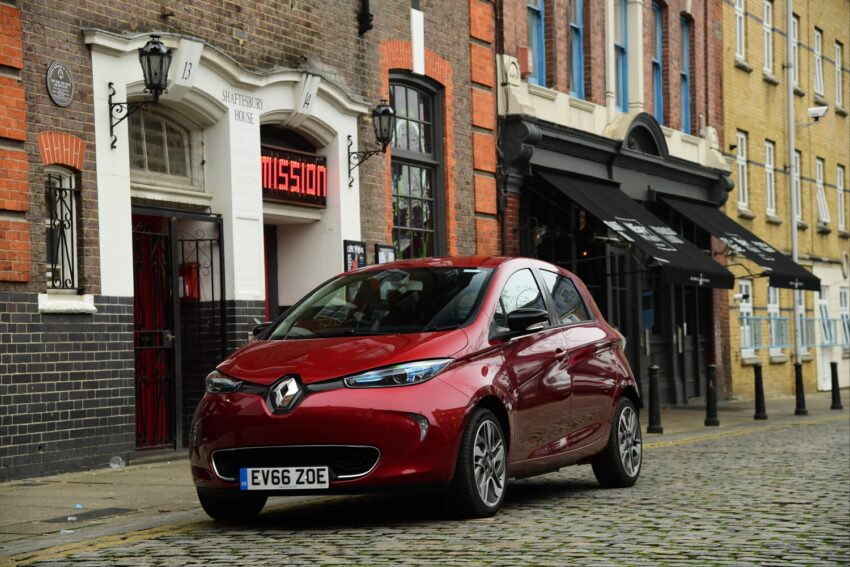
Used electric cars: What to consider when buying a secondhand EV
We share our top tips for buying a used EV – from picking the right model to understanding battery degradation, insurance and chargingSales of used electric cars hit record levels across 2024 and show no signs of slowing in 2025.As new EV registrations reach new highs, the scale of the second-hand EV market also soars, with an ever-growing number and variety of makes and models. While cheaper new EVs are arriving, many buyers still cite the purchase price of an EV as a major concern, which is where a used electric car can help. Not only are they a cheaper way into an EV but in many cases they are now as cheap or even cheaper than a petrol or diesel equivalent.
Be sure to check out our list of the best used EVs on sale but before that, here are our top tips on the dos and don’ts of buying a used electric car.
Choose a suitable model
It’s important to make sure that you choose an EV that meets your needs. Key things to consider are cost, range and size.
The most basic factor is your budget which will dictate the makes and models available to you. Also think about how big a car you need. A family might need a large SUV or estate car like the Skoda Enyaq or Volkswagen ID.7 Tourer as their main vehicle. But someone looking for a simple commuting car or second vehicle might find a compact hatchback such as the Fiat 500 or Mini Cooper a better choice.
How you will use the car affects what sort of range you need. While it’s tempting to go for the biggest battery/longest range, you might end up paying more for capacity you don’t need. If you mostly make short, local journeys and charge regularly, you could save money by choosing a car with a smaller battery.
If you make a lot of long trips, a bigger battery makes more sense, as does choosing a car with a fast DC charging speed so you don’t spend so long waiting at chargers.
Consider the power/range balance. More powerful cars, especially those with more than one motor will have faster acceleration but worse energy efficiency and range. A rear-wheel-drive Kia EV6, for example, has a maximum range of 328, while the all-wheel-drive version manages 314 miles.
Check history & documents
Like any car, it’s vital to check the history of any EV you’re looking at. That includes using a data check to make sure it hasn’t been written off or reported stolen, and that it doesn’t have any outstanding finance against it.
Maintenance on electric cars is less demanding than on petrol or diesel vehicles thanks to the lower number of moving parts. But it’s still important to have an EV serviced according to its schedule, so ask to see the car’s service record and be very wary of a car that has none or only partial history.
If the car is more than three years old, use the DVLA’s MOT checker to see its MOT history. This helps identify any problems and allows you to verify the car’s mileage.
Inspect the car
Thoroughly look over the bodywork for scratches, dents, rust or signs of repairs. Check the condition of the tyres for tread depth and any uneven wear. And check the brakes. EVs use their friction brakes far less than an ICE car, so these can corrode more quickly.
Make sure everything works as it should – from electric windows and air con to the infotainment system and all the lights. Modern cars are complicated things and issues with apparently simple features can cost a lot to fix.
In addition, check the charging socket isn’t damaged and ensure any charging cables are present and undamaged.

Used EV battery degradation
is one of the biggest concerns around used EVs. Understandably, drivers don’t want to buy a car that has lost a substantial portion of its original range due to battery wear.
The good news is that EV batteries are far more robust that something like your mobile phone. Data suggests degradation is less of a problem than was initially thought and battery robustness is improving all the time.
However, as batteries get older they will lose some of their capacity, resulting in a reduction in range. Telematic specialist Geotab estimates that the average battery loses 1.8% of its capacity per year. That means a car with an initial maximum range of 236 miles (the average EV range, according to the SMMT) will lose around 21 miles of range over 5 years.
Most manufacturers offer seven or eight-year warranties on their batteries, although Lexus covers its batteries for 10 years or 600,000 miles. This means if a battery’s usable capacity drops below a set level (usually 70% or 80%) within that period it will be replaced by the car maker. But in most cases you can expect an EV’s battery to remain usable far longer than that.
Nonetheless, you should try to check the battery’s health just to make sure there are no obvious signs of excessive degredation.
The simplest way to do this is to compare the displayed range against the official stated figure. If the car is fully charged, this is easy. If it’s not you’ll have to do some calculations based on the state of charge and the displayed range.
Bear in mind that predicted range is affected by how the car has been driven previously, as well as extremes in temperature, and (like petrol and diesel cars) almost no EV ever matches the official WLTP figures. So expect some variance from the manufacturer’s claimed figure but watch out for any huge differences.
Some retailers are beginning to offer battery health checks on used electric cars which give a detailed breakdown of the battery’s remaining usable capacity and any issues such as degraded or damaged cells.
Battery leases
Until around 2018, Renault and Nissan offered battery leasing on their electric cars as a means to keep down initial costs.
Instead of paying for the battery outright as part of the car’s list price, customers paid a monthly fee depending on their mileage and length of contract.

While the schemes were dropped from new car sales years ago, a surprising number of secondhand cars are still tied into battery lease programmes and the contract passes on to any new owner, leaving them with a monthly bill.
Most adverts state up front if the car is a battery lease model but always check, especially if you’re looking at a Zoe or Leaf that seems particularly cheap.
Battery lease cars are cheaper to buy than battery owned vehicles but you’ll need to do some careful calculations to work out if the initial savings are worth the long-term payments. The good news is that you can now buy your way out of the lease.
Used electric car insurance
Lots of factors affect your insurance but some electric cars can be very expensive to insure, so get some quotes before settling on a particular car.
Our own videographer, for example, was choosing between a Tesla Model 3 and a Polestar 2, and discovered the Tesla was twice as expensive to insure. There are even some reports of insurers refusing to cover certain EVs either due to the complexity of repairs, problems sourcing parts or a lack of knowledge on how to do the work.
However, it’s not an issue for all electric cars and exclusive research by EV Powered last year revealed that electric cars are, on average, cheaper to insure than petrol ones. Just make sure you do your research in advance.
Charging

Alongside all the considerations of the car, you need to think about how and where you’ll charge it.
Charging at home is undoubtedly the easiest and cheapest way to do it but you’ll need to source and pay for your wallbox yourself. It’s usually not a difficult process but it is an additional cost to factor into your budget. You can even opt for a used home charger to go with your used electric car. And you can read our guide to that here.
If you don’t have off-street parking, think about where and how you’ll charge your car. On-street devices are soaring in number, meaning you may be able to use a kerbside device near your home. If not, you’ll want to be confident that you have sufficient access to other public charging. This can become complicated and expensive, so if you’re in this position, it might be that an EV isn’t the right choice for you yet.





